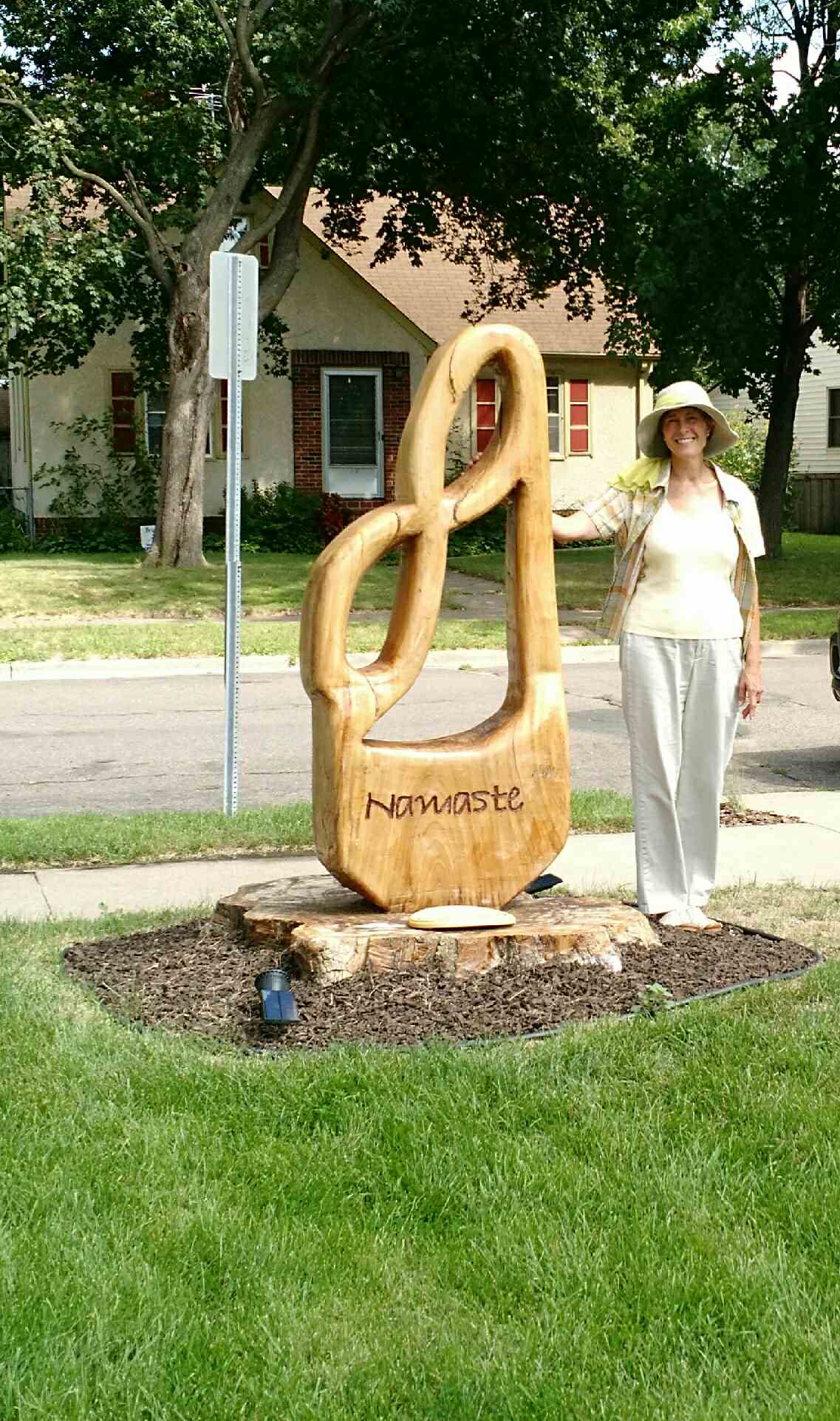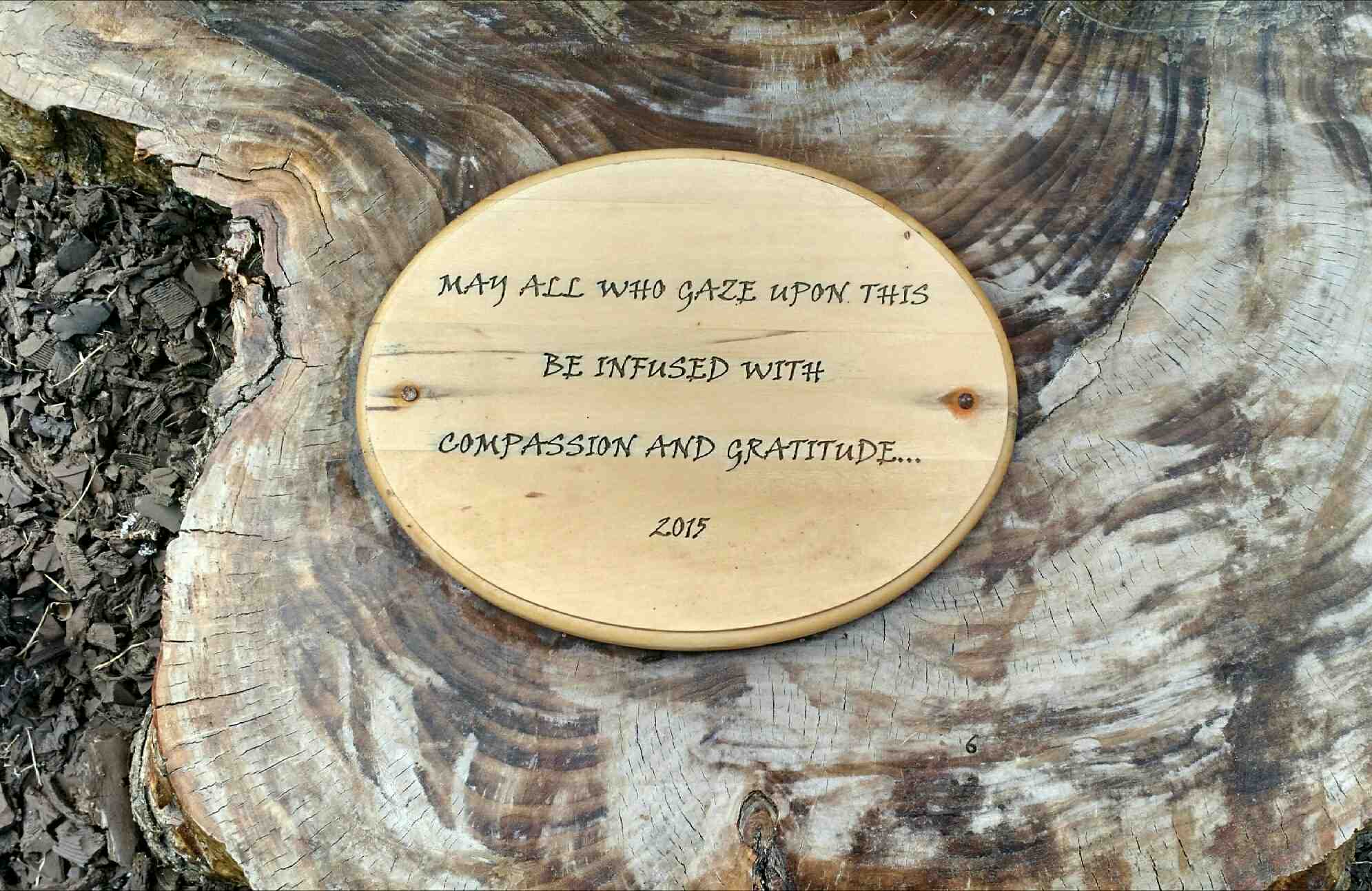She stood proud, bringing comfort to those she lived to shelter. She intently watched the passersby each day. And like the rest of us, she grew older, but in her world, she was lauded for her age—considered more valuable because of it. Then the infection set in and began to gnaw its way through her system. At first, her sickness wasn’t visible, and her condition worsened without any outward signs. Soon enough, though, her cancer showed, and no doctor in the city could cure her.
One day, men drove up to her house where she stood, now weakened, and performed the dreaded act: They sprayed a belt of orange paint around her, marking her for death.
Efay Imani gazed out the windows of her home, her heart heavy. The jarring orange that circled her friend in the front yard meant only one thing: The grand elm tree must go.
“Do I have to take it all the way down?” she asked the city workers.
Her question was answered with furrowed brows and shrugs. But she didn’t take the death certificate as the final word. Instead, she hired someone to cut the tree mostly down and strip it of its diseased bark. A city worker returned, inspected the tall remaining stump, and pronounced it satisfactory.
Efay longed to inspire the neighborhood by turning the remains of the tree into a sculpture. But of what? A dove? A lotus flower? No, it should be something else. She sat down with pen and paper and drew a new future for her once glorious tree. She shared the plans with her grandson, a graphic designer. He produced a six-foot design, and soon her tree trimmer and his team went to work. During the carving days, neighbors would saunter by, trying to guess what the piece would one day be.
“No, don’t tell me,” said one woman. “I want to be surprised.”
The wood carvers followed Efay’s desires and created an infinity symbol with its graceful curves and movement. When they had finished, they sanded and sealed their work. A gift for the neighborhood. A new purpose after illness. Beauty from brokenness.
One day, I sat at Efay’s table—along with our friend and neighbor Monica—and listened to Efay tell her stories. But her life wasn’t all about the tree—now a sculpture—in her front yard. Eighteen years earlier, Efay had suffered a brain stem stroke, which left her right side numb and her left side weakened. The doctors said a nursing home was her only option. “Whatever is restored to you in one year is all you’ll get,” they had said of her condition.
Her resolve had bolstered her, but life back at home highlighted her limitations; even her garden reminded her of what she couldn’t do anymore. She mourned the person she had been and surrendered her past capabilities. And then one night, the dreams started.
Efay dreamed that someone was massaging her foot, but in a different way than she had ever known. The next day, she hurried to work—where she had practiced massage therapy for the previous six years—and told one of her staff members about her dream. He began massaging her foot using the technique she described. After three days, sensation returned to her foot. She dreamed of the technique again, but this time used on her calf. The dreams continued. In her waking hours, Efay employed the new method until each area of her body numbed by the stroke had regained feeling. Three months later, she could work again, and within three years, she had reclaimed even more use of her body—something the doctors had said was impossible.
Efay used her new technique to help others avoid surgical procedures and heal. And even though some of her clients had been told they would have to live with pain, under her care, she helped put them back together.
“I have an issue with people discarding things because they’re old or have problems.” Efay patted her chest and chuckled. “Because I’m old.”
A life of service after a stroke. A new purpose from something broken. Beauty from a tree stump.
Here is Efay Imani’s website for her therapeutic massage business: www.inside3hands.com
She lives at 4145 James Avenue North in Minneapolis and invites you to visit her sculpture sometime when you’re in the neighborhood. She doesn’t like posing for pictures, though, so here's a photo of our friend Monica with the sculpture instead.
*Miss an installment of the blog? Or want to catch the story from the beginning? Visit http://www.tamarajorell.com/blog-entries-by-date
*Names in this blog have been changed to protect my family, neighbors, and friends in the neighborhood, and in a nod of appreciation to the beloved Swedish author Maj Lindman, I’ve renamed my three blondies Flicka, Ricka, and Dicka.

